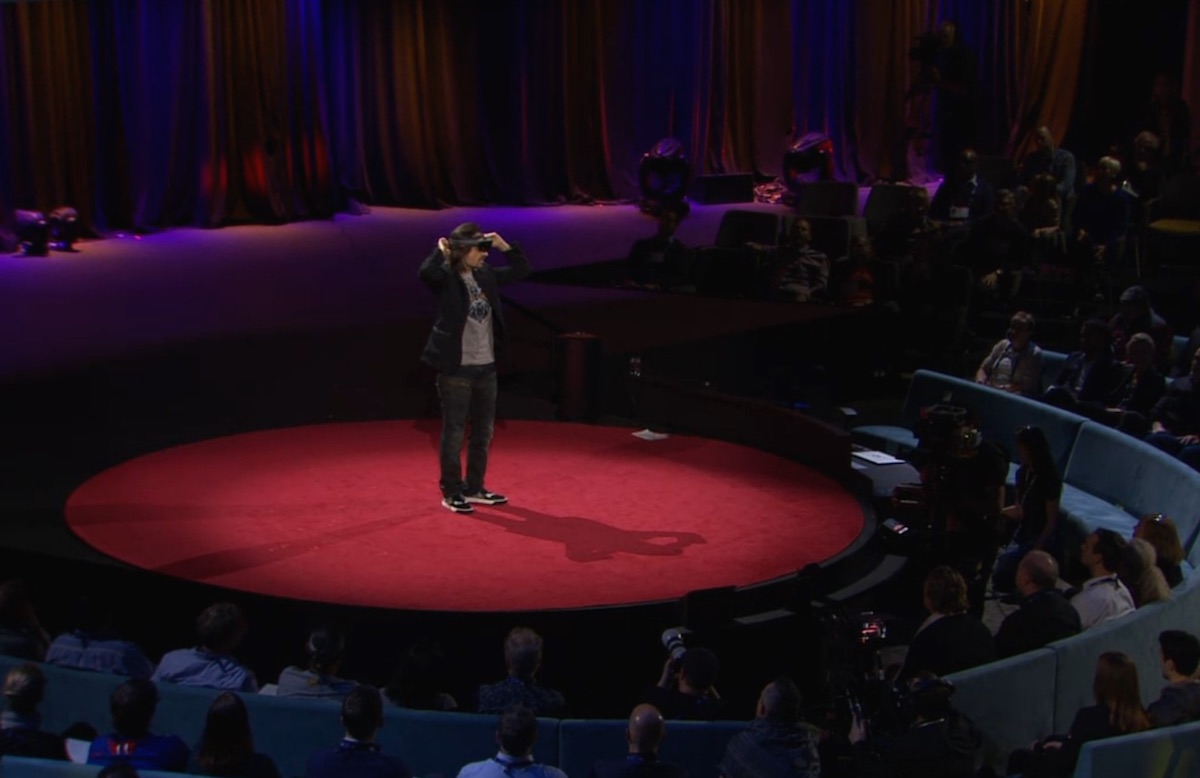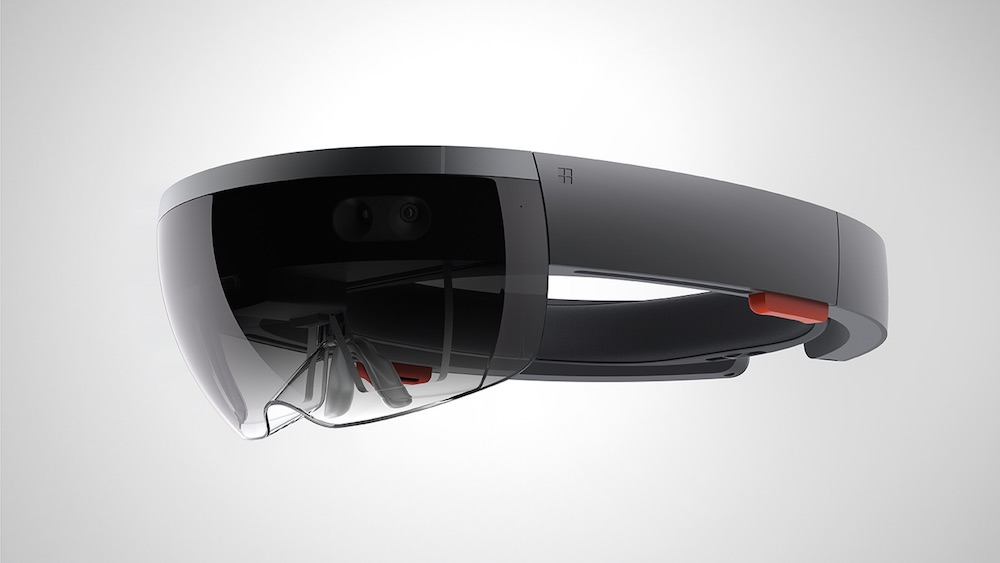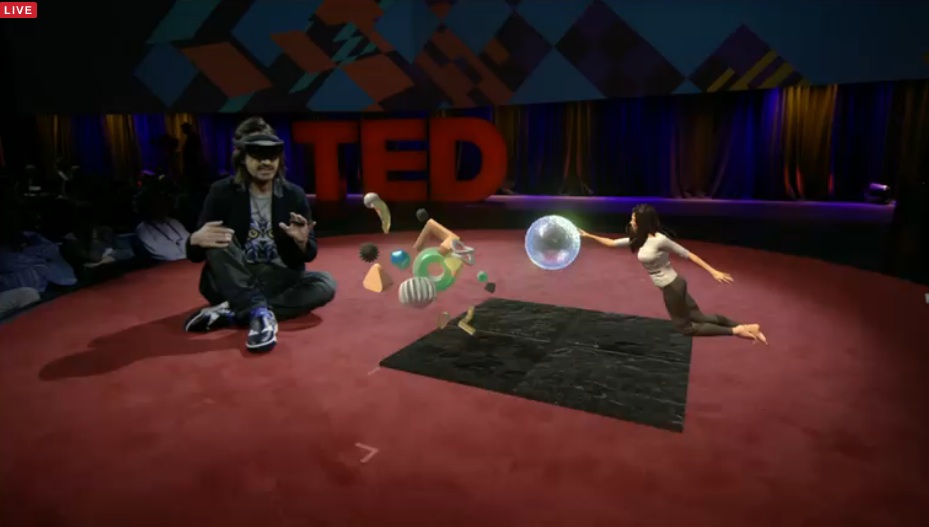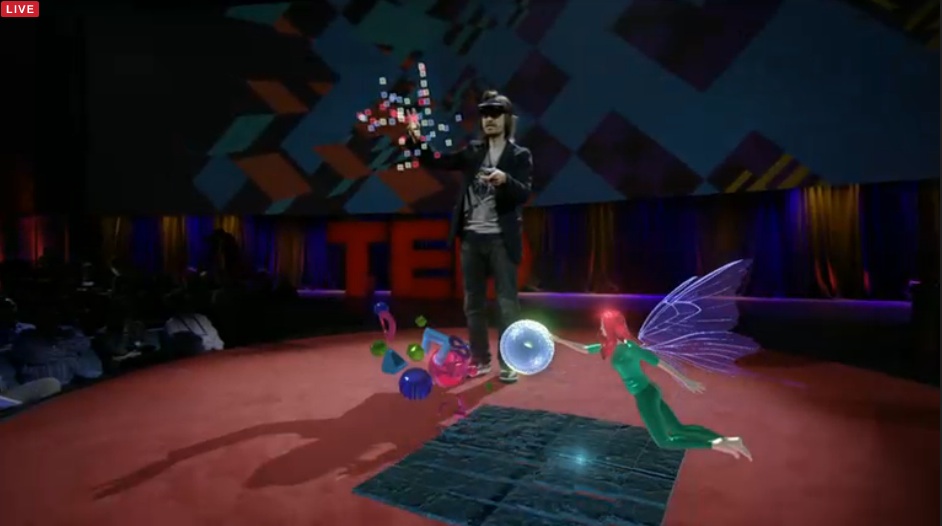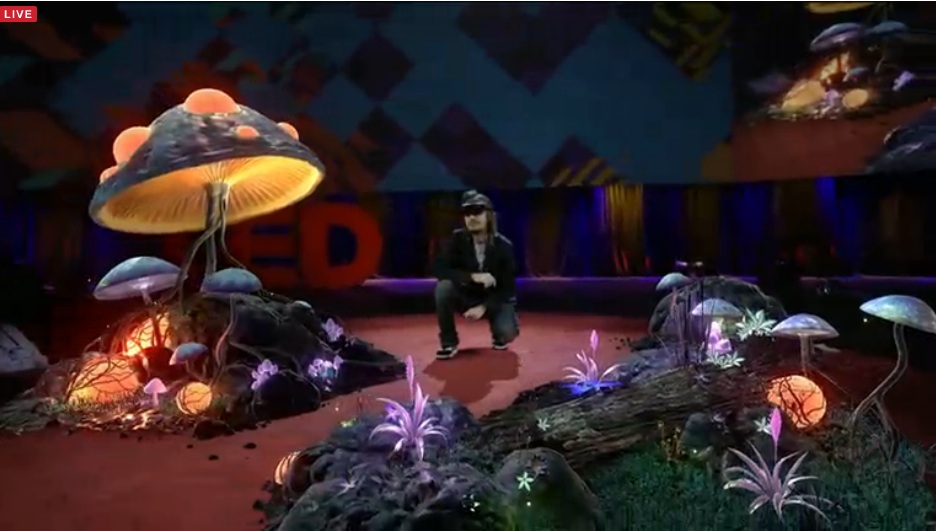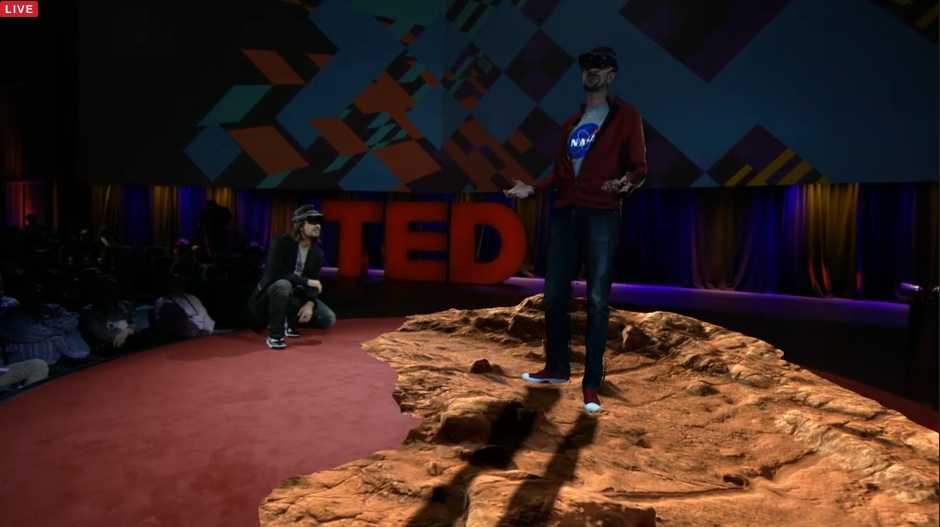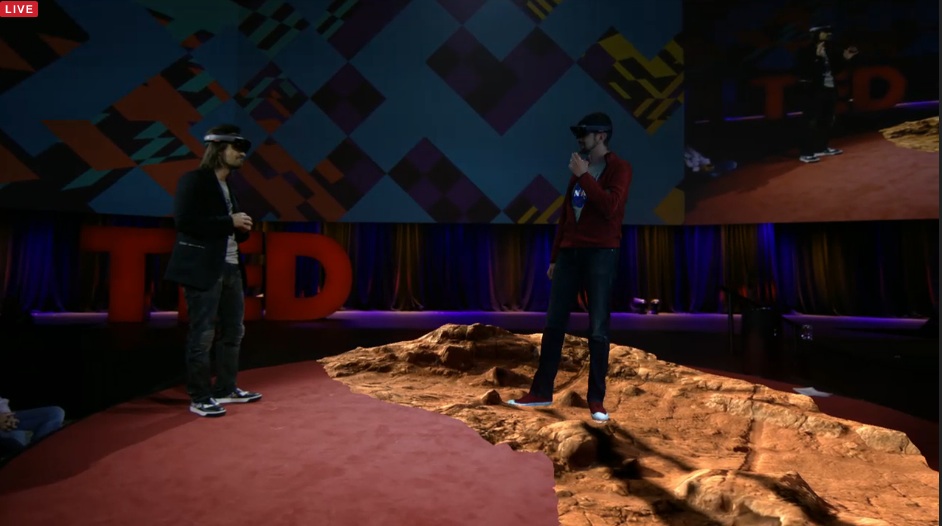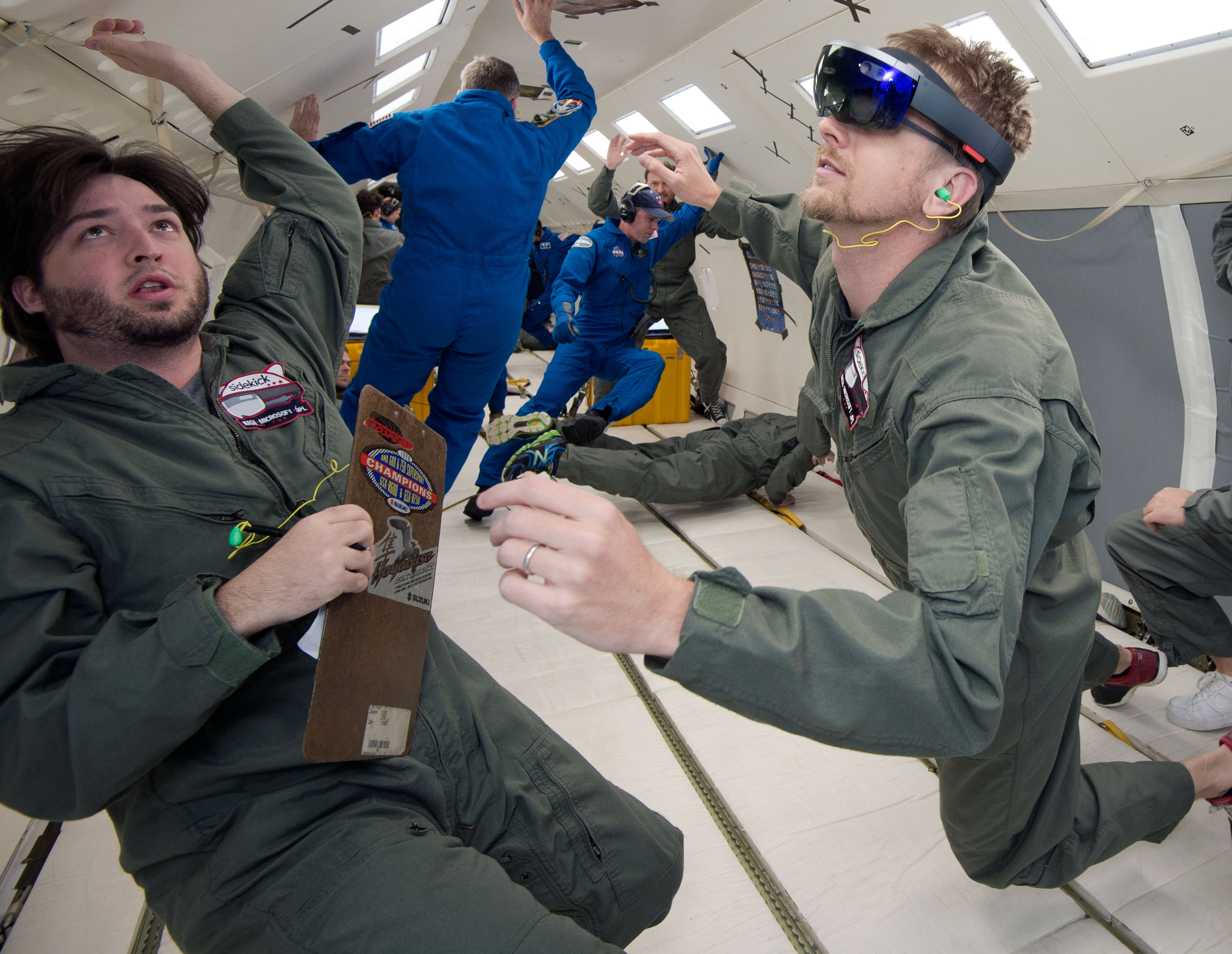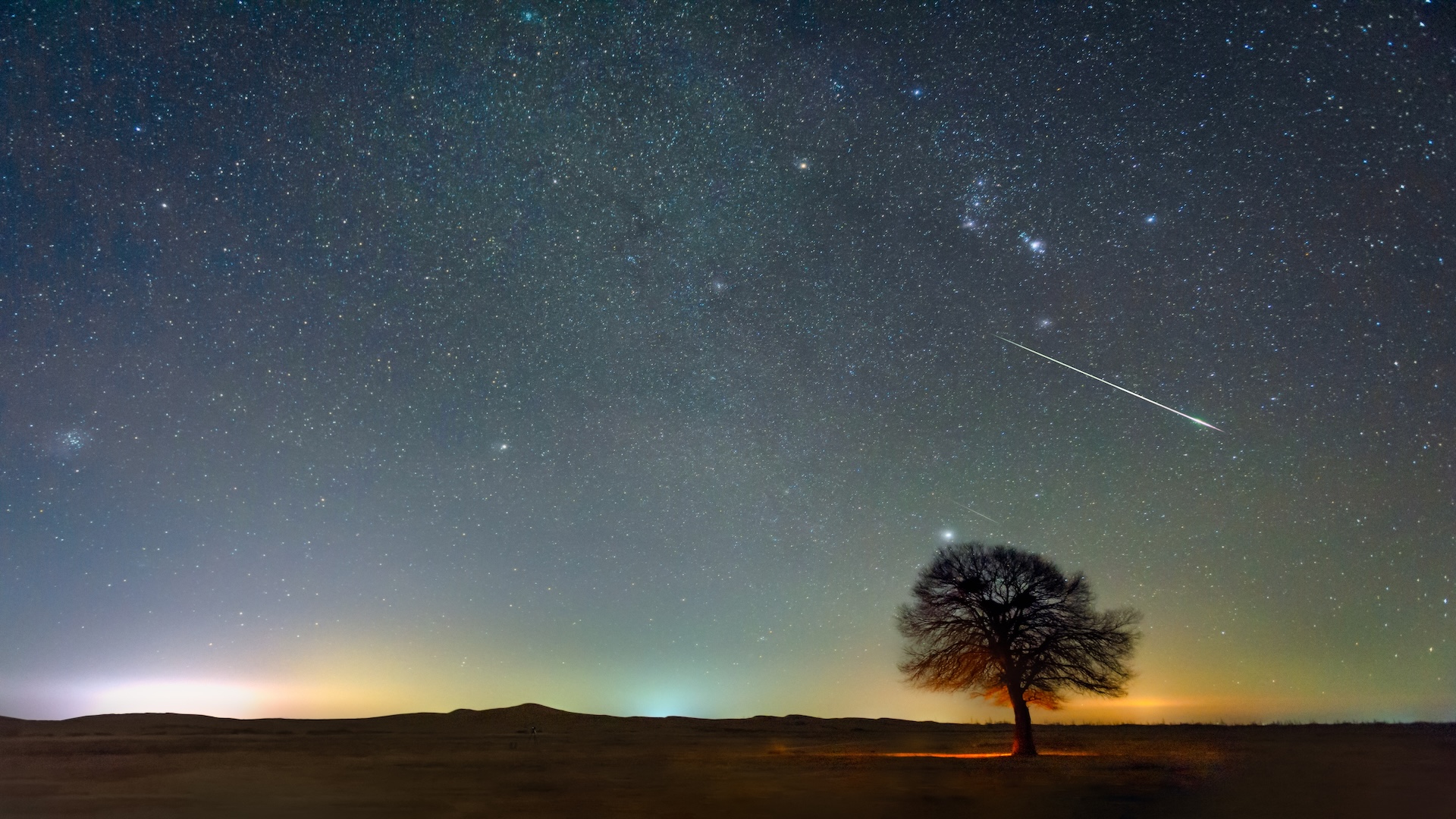Photos: Microsoft's HoloLens Transforms Surroundings with Holographic Tech
On the TED stage in Vancouver, Canada, Alex Kipman demoed his newest baby: the Microsoft HoloLens. And he did it with a visual bang. Kipman teleported a hologram of a NASA scientist onto the stage. Here's a look at the new technology and how it could transform your world.
A new reality
Kipman onstage during his TED talk in Vancouver, Canada, wearing a HoloLens headset. (Credit: TED2016 screengrab)
The headset
The HoloLens headset, which is equipped with loads of sensors, a fish-eye-lens camera and a holographic processing unit. (Photo Credit: Microsoft)
Mixed reality
Kipman demonstrates how the HoloLens lets you overlay holograms onto the real word, which the headset maps out with spatial mapping technology at five frames per second, in real-time. With hand gestures the wearer can move and modify the holograms. (Credit: TED2016 screengrab)
Get the world’s most fascinating discoveries delivered straight to your inbox.
Imaginary realm
And those holograms can be unlike real life, as Kipman demonstrates with the fairy (or elf) onstage with him. (Credit: TED2016 screengrab)
Trippy world
With HoloLens the wearer can transform their room (or a TED talk stage) into a glowing make-believe forest that the person can walk through and explore. (Credit: TED2016 screengrab)
Holographic teleportation
NASA scientist Jeff Norris was teleported, or at least a hologram of him was, onto the stage with Kipman. "I'm actually in three places," Norris said. "I'm standing in a room across the street while I'm standing on the stage with your while I'm standing on mars a hundred million miles away."
He added, "This is a precise holographic replica of Mars built from data captured by the Curiosity Mars rover." (Credit: TED2016 screengrab)
HoloLens for science
NASA is using HoloLens to allow astronauts to explore other planets like Mars with their feet planted firmly on Earth. (Credit: TED2016 screengrab)
HoloLens in space
NASA and Microsoft engineers test Project Sidekick on NASA’s Weightless Wonder C9 jet. Project Sidekick will use Microsoft HoloLens to provide virtual aid to astronauts working on the International Space Station. (Photo Credit: NASA)
Follow us @livescience, Facebook & Google+.
Jeanna Bryner is managing editor of Scientific American. Previously she was editor in chief of Live Science and, prior to that, an editor at Scholastic's Science World magazine. Bryner has an English degree from Salisbury University, a master's degree in biogeochemistry and environmental sciences from the University of Maryland and a graduate science journalism degree from New York University. She has worked as a biologist in Florida, where she monitored wetlands and did field surveys for endangered species, including the gorgeous Florida Scrub Jay. She also received an ocean sciences journalism fellowship from the Woods Hole Oceanographic Institution. She is a firm believer that science is for everyone and that just about everything can be viewed through the lens of science.


